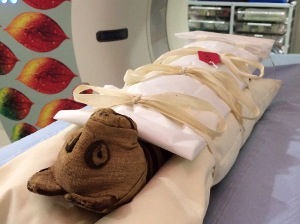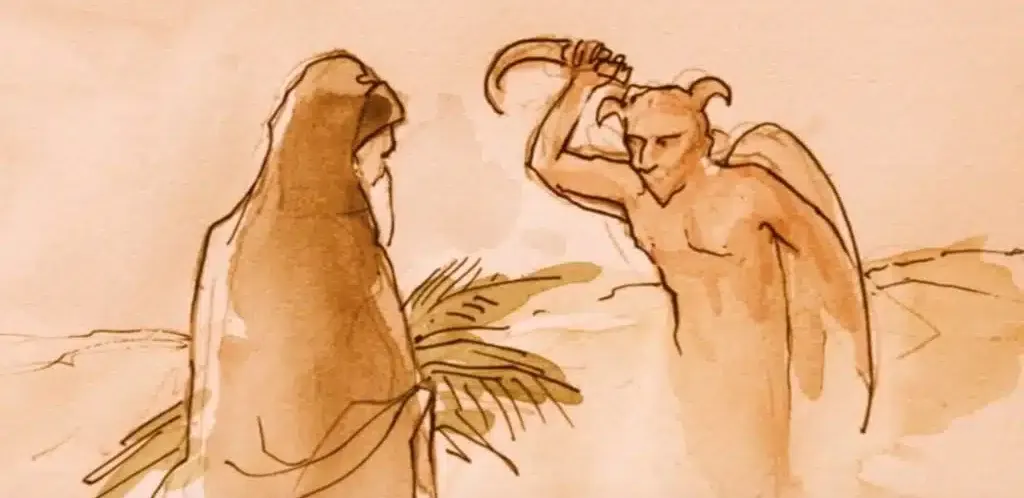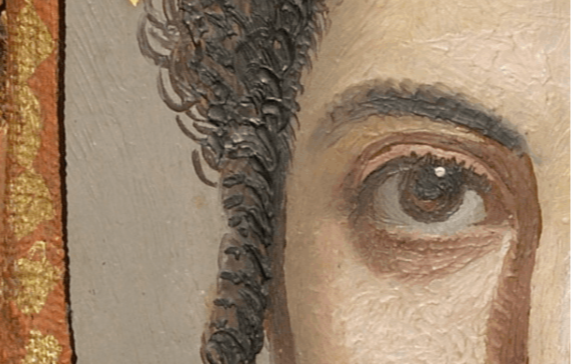2023
December 2023

Dr Cooke, in his role as Senior Curator at Liverpool World Museum, has been looking at the animal mummies in the collection and, specifically, at what is inside them.
The first experimental x-ray of one these mummies took place many years ago and was of a bird, but the first serious programme x-raying the collection did not begin until 1995 and included both birds and animals. Later, in 2008 the museum began a comprehensive programme, not only x-raying for research but also to see what each mummy actually contained, avoiding any need to unwrap them and destroy the bandaging whilst doing so.
The vast majority of these animal mummies were produced for the cults of different gods associated with a variety of animals and birds. Each god could be represented with an animal head on a human body as one of its manifestations; for example Anubis shown with the head of a jackal and the body of a man. These cults appointed special groups of priests to conduct ceremonies in the god’s honour and in some cases to look after cult animals as representatives of the god. This continued well into the Christian era, especially in North Saqqara, where 750,000 to 1 million animal mummies have been found on the north side of the cemetery alone.
Up to 8 million mummies of dogs have been discovered in dog catacombs as offerings to Anubis, mostly donated by pilgrims. This was very advantageous to the local and national economy as these pilgrims would buy their offerings, usually bred for this purpose by the cult priests locally, and would need supplies for themselves as well. The pilgrims would expect to gain blessings from the cult priests or a message via an oracle. The best sources of information about this practice are written sources from the sides of coffins and mummy jars.
The x-rays discovered that things were not always quite what might have been expected. They showed that frequently there wasn’t always one complete animal in each bundle or vessel. They were often messy with one or more partial skeletons, incomplete bits and pieces and sometimes no bits of bone at all. X-rays not only stop the need to unwrap these bundles, so preserving the sometimes complex wrappings, but also show clearly what is inside quickly and cleanly. One such bundle showed it contained an incomplete ibis with a layer of air produced after settlement. Another contained a bird, missing a leg and part of a rib cage and a third, a tiny part of a ram inside a framework constructed to create the correct shape, probably to represent Amun. The Joseph Mayer collection included a mummy bought from Joseph Sands, which was labelled as an embalmed serpent, but this actually turned out to be just a bundle of linen strips that had been misidentified.
Cat mummies tended typically to be formed in a long cylindrical shape with a cat-shaped head, wrapped geometrically and sometimes with a cartonnage mask with ears, a nose, cheeks and maybe a collar attached. In 2004 Nature Magazine identified wax and paint on the linen on one such mummy. X-rays can identify how these cats were manipulated to create the required shape before wrapping. There were a number of techniques; limbs removed, stuffing added or kittens filled out to represent an adult cat. Sometimes if no head remains it is hard to identify whether it is indeed a cat or a bird. X- rays solve this problem.
Crocodiles were mummified as gifts for Sobek and kept as objects of veneration at his cult centres and again, his priests would benefit economically from offerings from pilgrims to his temples. On being x-rayed in the 1995 research programme at Liverpool, some examples were found to have smaller mummified crocodiles standing on the backs of the larger ones. Interestingly two mummified mongooses were identified using x-rays, probably offered to the solar god, Atum or Horus.
In 1890, the Moss Steamship Company brought 28 tons of mummified animals to the UK for the bodies to be crushed and used as fertiliser and for the linen wrappings to go to the paper manufacturing industry. They filled two full ships and were to be auctioned as a job lot, but the second shipload ended up being auctioned off separately because of the enormous interest generated. The public was allowed to buy individual items at vastly inflated prices. National interest was piqued when the cat-like mummies were said to be a representative of the goddess Pakhet (she who scratches), who was later associated with the Greek goddess Artemis. The cat mummies sent to Liverpool were said to be less attractive than those sold in London; some of the finest examples of these are now displayed in the British Museum.
180,000 mummified cats landed in Liverpool were crushed and used as fertiliser. Gascon Maspero called this a tragedy as more could have been learned about these cults and these offerings. Many show fractures, especially of the neck and the cats had had an average lifespan of only two years. This suggests a mass breeding programme for the sole purpose of killing them as offerings; the thousands mummied in this way were certainly not kept as pets. The same applies to the other animals and birds mummified in such vast quantities.
November 2023

Dr Godenho described the Coptic language as “the last blast of the hieroglyphic language” and it is the Egyptian language written out in Greek letters; he teaches Coptic at the University of Liverpool. Unlike hieroglyphs Coptic is written including vowels and each Greek letter represents a definite sound. The content of the early texts is Christian, from the initial period when Christians were taking over traditional Egyptian religious sites and it was during this time that the languages became linked together. Some of the teaching texts he uses incorporate an address to Coptic saints and martyrs.
The perception of the devil/Satan changes over time. As seen by Christians at this very early time period he is based on the figure from the Old Testament. In the book of Job he is the Agent of God working for him on Earth, but his role changes as the gospels are written; for example, in the temptation in the desert, where he has transformed into an enemy of God. He becomes a fallen angel who corrupts humanity, especially in the Apocrypha (those books not included in the final version of the New Testament), tempting man to do evil. During the Middle Ages, from the 6th to the 16th centuries, the devil becomes more powerful as the ruler of his own kingdom, Hell. Events such as the Black Death are seen to be a personification of his power. During the Enlightenment, the Age of Reason, these events were explained using science rather than religious belief.
The Apophthegmata Patrum is a collection of Christian prayers and sayings from the 4th and 5th centuries AD written in Greek, Latin, Syrian and Coptic by early Christian fathers/mothers who decided to become hermits and live in isolation in the deserts, rather like early monks and nuns. They were organised into three types of writings :
Alphabetic - collected into groups using the names of the monks (mostly Greek) who wrote them.
Systematic – anonymous and organised by theme.
Systematic collection – arranged by theme and mostly Coptic translations.
The very early Christians liked to give the impression that they were solitary but in truth they often lived in communities either full or part time. These were not monasteries as we know them, but rather single cell communities meeting for communal prayer and worship. At this time there were no illustrations of the devil.
Dr. Godenho used AP#181, dated 30-319AD, as an example of one of these early accounts of the devil. He focused on Apa Macarius, who is described as an unpleasant individual, previously having been a rapist and a smuggler. Others were also portrayed as thieves and murderers. Macarius goes to church, listens to the teachings and is converted. He chooses to live outside the main monastic complex as a hermit. In AP#181, the start of the story describes how Apa (father) Macarius lived the life of a hermit in a great desert quite alone. He is described as “withdrawing in that place, below him another desert with many brothers in it”. Apa Macarius sees Satan approaching in human form, wearing a disguise and hoping to stroll right past him. Macarius asks him where he is going and Satan replies saying that he is going to tempt the brothers in the community below and has alcohol to corrupt them. Macarius makes no attempt to stop him and acts like an Egyptian high official by saying little. Later Satan returns and Macarius asks what happened. Satan says no brother was accepting of temptation, all refused the drink. When Macarius says to him “you have no friends”, Satan responds “one brother…Theopentus” and then he moves on. On another occasion Macarius was out walking when he encountered the devil again. Satan wants to kill him but Macarius reminds him that he himself can do everything that Satan can do, with ease. Satan admits that the one thing he cannot do is humble himself, so he cannot prevail over Macarius. Next Macarius goes off to see Theopentus. The brothers of the community come out waving palms to greet him and the elders welcome him. He goes to talk to Theopentus, knowing he has been tempted and fallen. Theopentus says he is well, thanks to his prayers, but is worried about this visit as he is ashamed to speak. Macarius tells him that even as an elder for so many years he is still tempted and asked how Theopentus fasts; his reply is till sunset (as in Ramadan today). Macarius advises him to fast till evening and then recite scriptures like an ascetic and to always look up to God if you have a bad thought as he will never fail help you. He reminds Theopentus that the palms used in greetings are a symbol of work and making them into baskets equals busy hands with no time for evil deeds or thoughts, squeezing temptation out.
The Apophthegmata shows Satan in the text as an unreasonable human being, not our current day notion of a Hollywood villain. There is no clear idea of Hell. His role is to tempt humanity away from God. Macarius tells people to fast, keep busy and to think good thoughts to stop Satan from winning them over. By personalising Satan and turning him into a real figure, this begins the process of demonising him into the figure that appears in the Middle Ages. This changes again during the Enlightenment when the vision of Satan is internalised rather than being externalised as a real figure, and he becomes an independent force opposing, though subordinate to, God.
The first dealings with the devil saw Satan in his early guise as an externalised being who planted thoughts and temptations into people and was most likely seen as a kind of wily trickster, not yet as the super powerful being that comes about later in the Middle Ages.
St Macarius the Great - The Monastery of St. Macarius the Great (stmacariusmonastery.org)
October 2023

Dr Corbelli delivered a fascinating and richly illustrated lecture about the Greco-Roman mummy portraits, setting them in their context time-wise and giving a summary of their acquisition/excavation and arrival in museums in Europe and further afield, starting from the 17th Century. She explained how details such as the hairstyles and jewellery could identify them to a specific period and how the differing shapes of the boards could place them geographically. Judith detailed the different painting techniques and how the standard of the work deteriorated after about 130AD. She addressed the thorny issue of whether the paintings were created just for the burial or made beforehand and explained the different stages of the funeral rites. It was an exceedingly interesting lecture enjoyed by one and all.